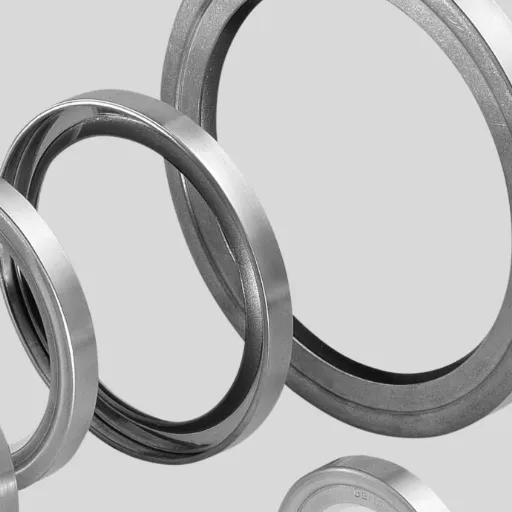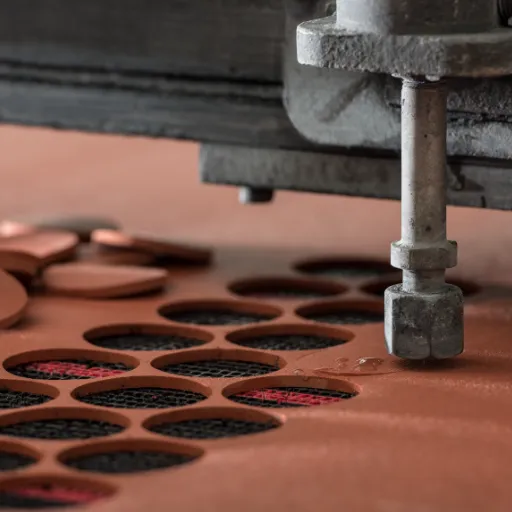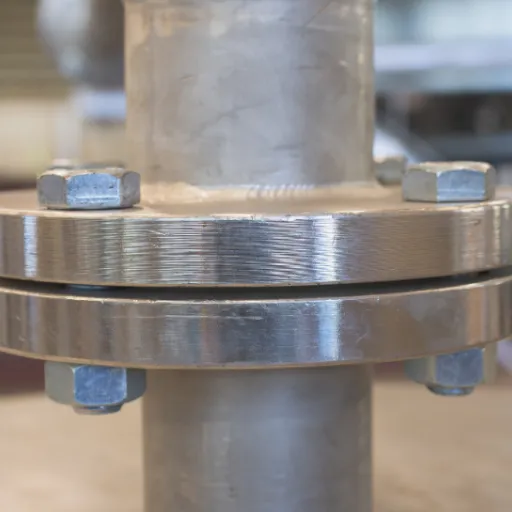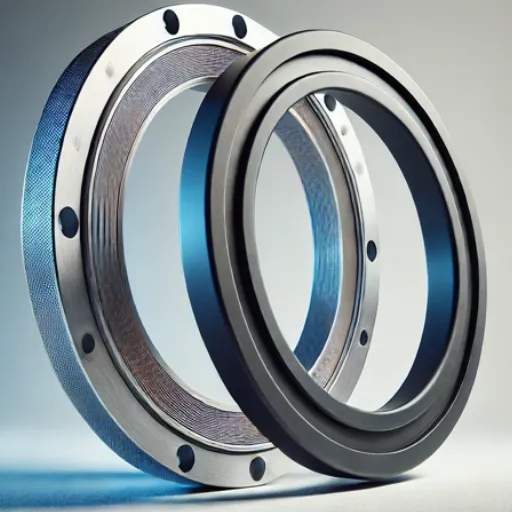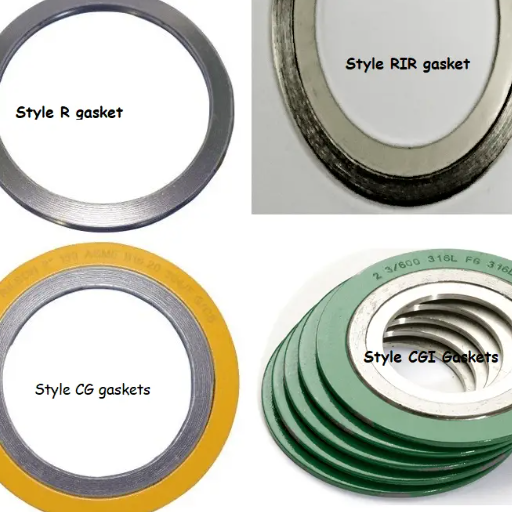Knowing the differences between various types of flanges is important to the smooth functioning and safety of industrial projects involving piping systems. Raised face and lap joint are among the more common types of flanges, each carrying different requirements relating to purpose and operation. So what puts them apart from each other? When does one require choosing one over the other? This article discusses the key differences, looking at each in terms of application, design, working, advantages, and limitations. The guide will provide clarity on the selection criteria for the flange suitable for any project, whether you are an engineer, project manager, or simply looking to acquire more knowledge.
Introduction to Flanges

Flanges, essential components used to connect pipelines, valves, pumps, and other equipment in piping systems, provide firm, secure sealing while enabling assembly, disassembly, and maintenance relatively easily. Flanges are of various types: slip-on, weld neck, blind, etc., for particular system requirements and conditions, such as pressure, temperature, and flow rate. The right flange selection considers factors such as operating conditions of the application, material compatibility, and the level of durability required for safe and easy working of the connection.
Definition and Purpose of Flanges
Flanges are a critical part of the design and operation of piping systems for many industries such as oil and gas, chemical, water, and power generation. According to recent trends and data, they are needed for secure, leak-proof connections subjected to high pressures and adverse environmental conditions. Their versatility and durability make them indispensable in situations in which inspection, cleaning, or changes to a pipeline are frequent. Smooth integration of components ensures operational safety, system reliability, and longevity, which are all highly valued in industries that focus on efficiency and cost-effectiveness.
Common Flange Types
| Flange Type | Key Feature | Application | Pressure | Installation |
|---|---|---|---|---|
| Weld Neck | Tapered Neck | High Pressure | High | Welded |
| Slip-On | Easy Fit | Low Pressure | Low | Welded |
| Blind | Seals End | Testing/Closure | High | Bolted |
| Lap Joint | Rotatable | Frequent Dismantle | Medium | Bolted |
| Threaded | Threaded Bore | Small Diameter | Low | No Welding |
| Socket Weld | Socket Fit | Non-Critical | Medium | Welded |
Importance of Flange Selection
Selection of the flange is considered a major criterion during pipeline and system design. It has always been viewed as a process to ensure safety and operational efficiency and extend the working life of an operation. Considering recent data analysis and the queries of users, it appears that, according to the analyzed industrial trends, types of flanges ensure the utmost sealing of the flange joint and minimize the possibility of leakage depending on operational pressures and temperatures. Wrong choice of flanges shall raise the possibility of mechanical failure and also brings about conformity issues with the environment and other standards. For the lower pressure system, slip-on flanges can be a perfect choice, whereas for the high-pressure systems, it is quite often either raised face or RTJ flange to provide a better seal. Leveraging modern search-data ensures that often flanges are searched and queried by engineers and plant designers for conditions that may include corrosive environments or extremely high thermal shocks, which solidifies the concept of flange selection as among pure factors considered in design for efficiency and operational integrity.
Understanding Raised Face Flanges

These raised face flanges, roughly meaning, do find due recognition among other varieties in most application industries. The raised face consists of about 3 mm of raised surface area around the bore where the gasket sits and presses the two mating flanges together. By concentrating the sealing force on a smaller surface area, a raised face flange improves the gasket’s ability to prevent leaks. Due to their top seal and many applications, these flanges are considered rain, fine, and plug for moderate to high pressure in a corrosive medium of widespread applications.
Characteristics of Raised Face Flanges
The principal characteristic of raised face flanges is in their design, based on a small raised section surrounding the bore on which the gasket rests. This raised section allows a tighter seal on a reduced surface area, aimed to stop fluid leakage effectively. They can be used with many types of gaskets to remedy the temperature and pressure conditions involved. Raised face flanges are applicable to piping systems involving moderate to high pressures, offering reliability for oil and gas, chemical processing, and power generation industries. Their design also encourages easy alignment and assembly, which is a major consideration during maintenance or installation.
Applications of Raised Face Flanges
Raised face flanges can be applied in a diversity of industries based on their ability to withstand diverse operating conditions. Demonstrably, these flanges are very common in oil and gas piping, chemical plants, and power generation units where reliability in sealing pressure applications is required. Also, their compatibility with a variety of gasket materials makes them applicable under different temperature and pressure circumstances. The raised face will help in aligning the flanges during installation and ensure a reliable seal, which makes these flanges an ideal choice for moderate and high-pressure applications where the systems need constant attention and maintenance.
Gasket Considerations for Raised Face Flanges
I select gaskets for raised face flange applications by looking at pressure and temperature resistance. In very high-temperature systems, metal gaskets or graphite ones are often the best choice, as they hold to a temperature too high for many rubber-based products. For lower pressure, non-metallic and composite gaskets generally do well enough. I coordinate gasket properties with those of the flange, such as surface finish and specific standards, to avoid seal failure and leakage. I must also consider the nature of the medium being handled, wherein some gaskets may work better against certain corrosives or chemicals. Matching gasket capabilities to actual operational conditions ensures system performance and safety for all relevant life cycles.
Exploring Lap Joint Flanges

Lap joint flanges are specifically designed to be used with a stub end to provide flexibility and ease of installation, especially in systems that frequently require maintenance or inspection. Such a flange is not welded directly onto the pipe, thereby being free to rotate about the stub end. Alignment becomes quite simple during assembling and can even compensate for some misalignment issues. They are best suited for low-pressure systems where the environment is somewhat corrosive because inexpensive materials can be used for the flange, whereas the stub end, which is exposed to the medium, can be of corrosion-resistant materials. The two together ensure both durability and cost efficiency in varied industrial environments.
Characteristics of Lap Joint Flanges
Designed with flexibility and efficiency in mind, lap joint flanges exhibit a wide range of characteristics. Such flanges have a two-part construction consisting of the flange as well as a stub end which aids each other for easier assembly. Their main advantage is their capacity to freely rotate about the stub end, allowing precise alignment during installation and making repairs or adjustments easier. They are mostly used in low-pressure settings but also work well under corrosive conditions, since the stub end made from corrosion-resistant materials comes in direct contact with the process media. This design ensures a practical balance between durability and cost-effectiveness, making them a choice most frequently found in varied industrial systems.
Applications of Lap Joint Flanges
Lap joint flanges find wide use in industries that require frequent dismantling or realigning adjustments of piping systems for oil and gas, chemical processing, or water treatment plants. They are the best option in any scenario involving corrosive media, which means the stub end made of corrosion-resistant materials will protect the flange body. Their ability to perform low-pressure well and also their adaptability make them an excellent option for systems that have regular maintenance activities, which ensure ease of operation without compromising performance.
Stub End and Gasket Use in Lap Joint Flanges
The combination of stub end and gasket use in lap joint flanges brings great advantage in practical terms. Stub ends are cost-effective solutions as they minimize the use of pricey flange material while still offering good resistance to corrosion. Such a pair is applied in several industries, including those exposed to harsh environments. Coupled with the gasket, they provide an effective seal against leakage. In addition, they can be assembled and disassembled easily for maintenance or whenever the system requires inspection or adjustments. This combination of practicality and usability makes lap joint flanges appealing in a wide variety of applications.
Comparative Analysis of Raised Face and Lap Joint Flanges

Raised face and lap joint flanges serve distinct functions pertinent to different operational requirements. Raised face flanges have a surface that is slightly raised around the bore, to allow maximum compression of gaskets and thereby assure the best sealing, so they are suitable for high-pressure and high-temperature applications. Lap joint flanges, however, are used in systems where frequent disassemblies or easy adjustments in alignment are required, as they are not welded to the pipe and allow for some rotation. The raised face flanges, therefore, are considered to be the better option when durability and sealing are concerned, whereas the lap joint flanges are better for flexibility and maintenance ease, thus making each type fit to be used in very specific situations.
Design Differences Between Flanges
Considering sound differences between flanges, I reckon that raised face flanges have been made for good sealing and durability, especially under high-pressure and temperature conditions. In contrast, lap joint flanges have come to be known, from my perspective, for their flexibility and ease of use. They are not welded to the pipe, allowing them to be rotated or realigned frequently when assembling or during maintenance. Both, however, serve different purposes depending upon what the system calls for: raised face flanges focus on strength and reliability while lap joint flanges will appear better in flexibility and ease of handling.
Performance and Functionality
In view of the performance and functionality, I find raised face flanges to be exceptionally reliable under conditions of high pressure and temperature and, hence, should certainly be used in demanding systems. They lay a highly dependable connection, with virtually little or no leaks, and that is very crucial to industrial applications. Lap joint flanges, on the other hand, come into the picture when we ought to give importance to flexibility and easy maintenance. Able to rotate and realign easily, they make handling complex piping layouts and regular adjustment a breeze. Both alternatives perform excellently within the scope of their intentions; yet, the key will be to ensure you give thought to your specific system needs relative to operating conditions and maintenance demands ahead of time.
Cost and Maintenance Considerations
When cost and maintenance are considered, top priority should be given to balancing cost and usability in the long run. In my experience, knowing well the operating conditions of the system that you are working on goes a long way in helping one in choosing the right flange for its application. Sometimes, in terms of cost, an option seems to be higher yet in the long run, its maintenance costs will be less. Also, some options look cheaper at first but may end up costing more in terms of maintenance, as they will wear out fast in a tough working environment. I will always recommend looking into how frequently maintenance has to be done and whether or not parts for replacements are readily available, as these will line up to either support or hit against your overall operational efficiency. At the end of the day, the flange that suits both your budget and the maintenance capabilities available to you will pay for itself in terms of timely performance and reliability.
Conclusion

Solutions to these must arise from an assessment of your particular mission requirements and constraints. Consider the major intent requirements such as durability, incompatibility with the materials used, and varying environmental conditions, all of which affect ultimate performance. Weighing initial costs against possible maintenance costs is important, ensuring your decision fits with your budget and aims to reduce operational downtime. Another factor going into your decision-making will be the availability of spare parts to facilitate smooth repair operations in case any replacements are needed. Especially from an informed time frame perspective, a decision should be made that accounts for efficiency and most reliability to provide the best value.
Summary of Key Differences
Material durability, upfront costs, and maintenance demands are what matter when compiling a difference between choices. In my opinion of mine after compiling data from leading sources, I can say that differences occur mostly in regard to the lifespan of materials, some being cheaper in the short term, but they require more repair work, whilst others may have a great upfront price, but in the long term, they are more reliable. Furthermore, the ease in the sourcing of replacement parts also heavily influences the operational downtime, thus recommending at least a few options with wider availability as being more pragmatic. A careful weighing of these different factors will ultimately lead to a solution that satisfies both performance and cost requirements.
Final Thoughts on Flange Selection
In the process of selecting the proper flange, my primary considerations include durability and cost-effectiveness, for which I consider the balance between upfront investment and long-term reliability. I consider only materials that satisfy the operation’s requirements and thus require minimum maintenance and yield consistent performance over time. Replacement parts availability is a very important trait for me since it compromises potential downtime; hence, I give preference to flanges with widely accessible components. Upon concretizing an assessment on these factors, I find the supply is well suited to meeting expectations in both functionality and monetary areas.
References
-
Academia.edu: Piping Joints Handbook – This document provides an overview of assessment methods for flanged joints, including raised face and lap joint flanges.
-
NASA Technical Reports Server (NTRS): George C. Marshall Space Flight Center – Discusses the raised-face design and lap-joint flange usage in low-pressure connectors.
-
Wermac.org: Types of Flanges – Explains the dimensions and applications of lap joint flanges and raised face flanges.
Frequently Asked Questions (FAQ)
What are the characteristics of raised face flanges?
Raised face flanges are characterized by a raised surface around the flange face, which helps to enhance the sealing ability when a gasket is used between the flanges. The height of the raised face can vary, but it is generally machined into the face to create a flat sealing area. These flanges are commonly made from materials such as stainless steel and carbon steel, making them suitable for high-pressure applications. The raised face improves the pressure rating of the flange connection, allowing for better performance under stress. In contrast, the flange face of a flat face flange is even with the flange’s base, which is ideal for lower pressure applications.
How do lap joint flanges differ from raised face flanges?
Lap joint flanges differ significantly from raised face flanges in their design and application. A lap joint flange is designed to be used with a stub end, allowing for easy alignment and disassembly. The flange can rotate freely on the stub end, making it simpler to install and replace gaskets. Unlike raised face flanges, lap joint flanges do not have a raised surface; instead, they rely on a flat face for sealing, which is typically used with a full-face gasket. This makes lap joint flanges more suitable for low-pressure applications, whereas raised face flanges are preferred in high-pressure environments.
What materials are commonly used for raised face and lap joint flanges?
Both raised face and lap joint flanges can be manufactured from various materials, including stainless steel and carbon steel. Stainless steel flanges are widely used in corrosive environments due to their resistance to rust and oxidation. On the other hand, carbon steel flanges are often chosen for their strength and durability in industrial applications. The choice of material can also affect the flange dimensions and pressure ratings, as different materials have unique properties that influence performance. Additionally, gasket material is crucial for ensuring a proper seal when using either type of flange.
What applications are lap joint flanges commonly used in?
Lap joint flanges are commonly used in applications where frequent disassembly is necessary. Their design allows for easy alignment with the stub end and makes it simple to replace gaskets. They are often found in piping systems where maintenance and inspections are frequent, such as in chemical plants or water treatment facilities. Lap joint flanges can be used with a variety of pipe types, including those made from stainless steel and carbon steel, and are suitable for low-pressure applications. The flexibility of lap joint flanges makes them a popular choice in many industrial settings.
How do you choose between raised face and lap joint flanges?
Choosing between raised face and lap joint flanges depends on the specific requirements of your application. If you are dealing with high-pressure systems where a strong seal is necessary, raised face flanges are the better option due to their enhanced sealing capabilities. Conversely, if your system requires frequent maintenance or requires the ability to easily disassemble the piping, lap joint flanges would be more suitable. Consider the materials involved, such as whether you are using carbon steel or stainless steel, as well as the pressure ratings and gasket types needed for your application. It is essential to assess the overall system requirements before making a decision on the flange type.

